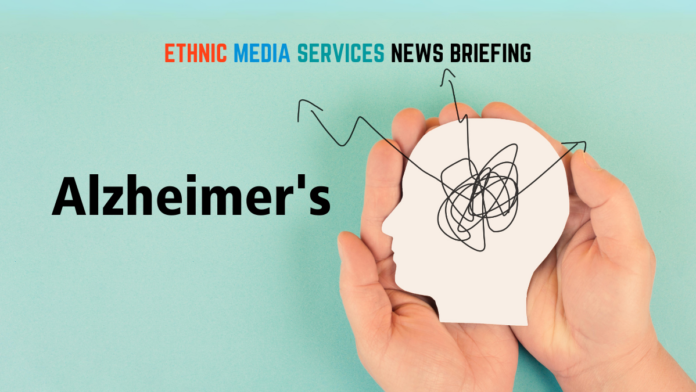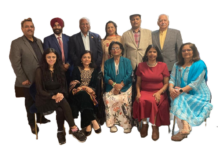Vidya Sethuraman
India Post News Service
The number of Alzheimer’s deaths in the U.S. more than doubled between 2000 and 2021, the Alzheimer’s Association says in its latest report, which details how about half of health care workers say their industry is not fully equipped to handle the growing population of people with dementia.
The impact of dementia is being felt across all sectors of society. Over the next 20 years, the impact of ADRDs on the State of California will increase dramatically. Longer life expectancies and the aging of the large baby boom cohort will lead to an increase in the number and percentage of Californians who will be 65 years of age and older.
Since the primary risk factor for ADRDs is older age, substantial increase is anticipated in the numbers of people who will be living with the disease. In 2019, approximately 660,000 Californians over 65 years of age lived with AD, which accounted for approximately 11% of the nation’s AD prevalence (5.8 million people). Between 2019 and 2040 a doubling in the number of Californians living with ADRDs is expected. Women and ethnic minorities are most susceptible to Alzheimer’s disease.
The number of Americans with dementia is projected to grow by nearly 14 million by 2060, according to the Centers for Medicare and Medicaid Services (CMS). EMS arranged for a briefing on this imperative issue on March 30. This year, the cost of caring for people living with Alzheimer’s and dementia is projected to increase by $15 billion from a year ago, rising to $360 billion.
Dr. Lucía Abascal, CDPH has two family members with Alzheimer’s disease. She said that Alzheimer’s disease used to be the third leading cause of death in California and is now the second leading cause of death.
As society ages, the rate of Alzheimer’s disease patients will also increase, and women and ethnic minorities are more likely to suffer from Alzheimer’s disease. To this end, CDPH is committed to eliminating misunderstandings and stigma associated with the disease, educating the community about Alzheimer’s, and changing prejudices to make Alzheimer’s a topic that can be talked about every day. This is a progressive disease, and if identified and diagnosed early, it is easier to take steps to reduce the risk.
Dr. Dolores Gallagher Thompson, Professor Emerita, Dept. of Psychiatry & Behavioral Sciences, Stanford University School of Medicine said there are rumors that curcumin and blueberries can prevent Alzheimer’s disease, but these folk remedies have no actual effect. At the same time, many people think that memory loss in old age is normal and do not attribute it to Alzheimer’s disease, so they do not seek medical treatment. It is our responsibility to make everyone aware of the characteristics of this disease, and we hope that by listening to the voices of the community, we can take practical and effective measures to enhance brain health.
Dr. María Aranda, USC Professor of Social Work and Gerontology, and Executive Director of USC Suzanne Dworak-Peck School of Social Work said that immigrants from Vietnam and China have a large number of Alzheimer’s diseases. Research shows that Asian families have huge caregiving pressure, and many middle-aged people bear the burden of supporting care. For the Asian community, education is critical. Some people mistake Alzheimer’s disease for mental illness, but Alzheimer’s disease is a brain disease and an abnormal aging phenomenon. Only by eliminating prejudice and shadow through education can more Asian groups seek medical treatment and participate in clinical trials. At the same time, the way of communication with Alzheimer’s patients can also be changed from verbal communication to physical interaction, so that the patients feel included and included in the family.
Petra Niles, Alzheimer’s Los Angeles – Senior Manager, Education & Outreach, African American Community said there are 55 million Alzheimer’s patients worldwide, 7 million in the United States, and 719,000 people over the age of 65 in California. Black people are twice as likely to have the disease as other groups.
It is important to give a definition to caregivers, family caregivers and hired caregivers are very different and there are a variety of resources available for them to get help. One hundred years after the first case of Alzheimer’s disease in 1906, the disease became more and more common and is not disappearing. When patients have problems, they should communicate with their doctors in a timely manner, and at the same time, strengthen exercise and maintain physical and mental health, which are beneficial to prevention and relief.
Also Read: Challenging the Stigma of Alzheimer’s in Ethnic Communities







